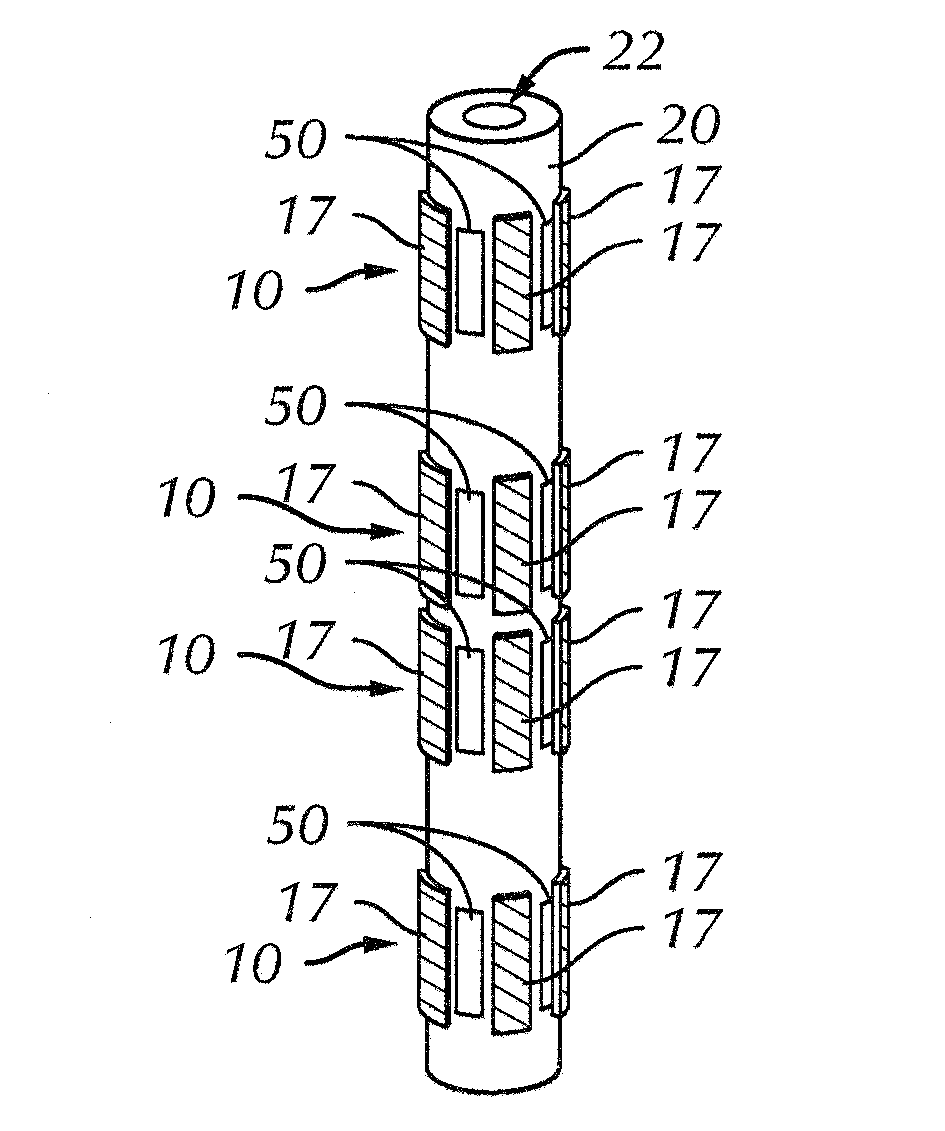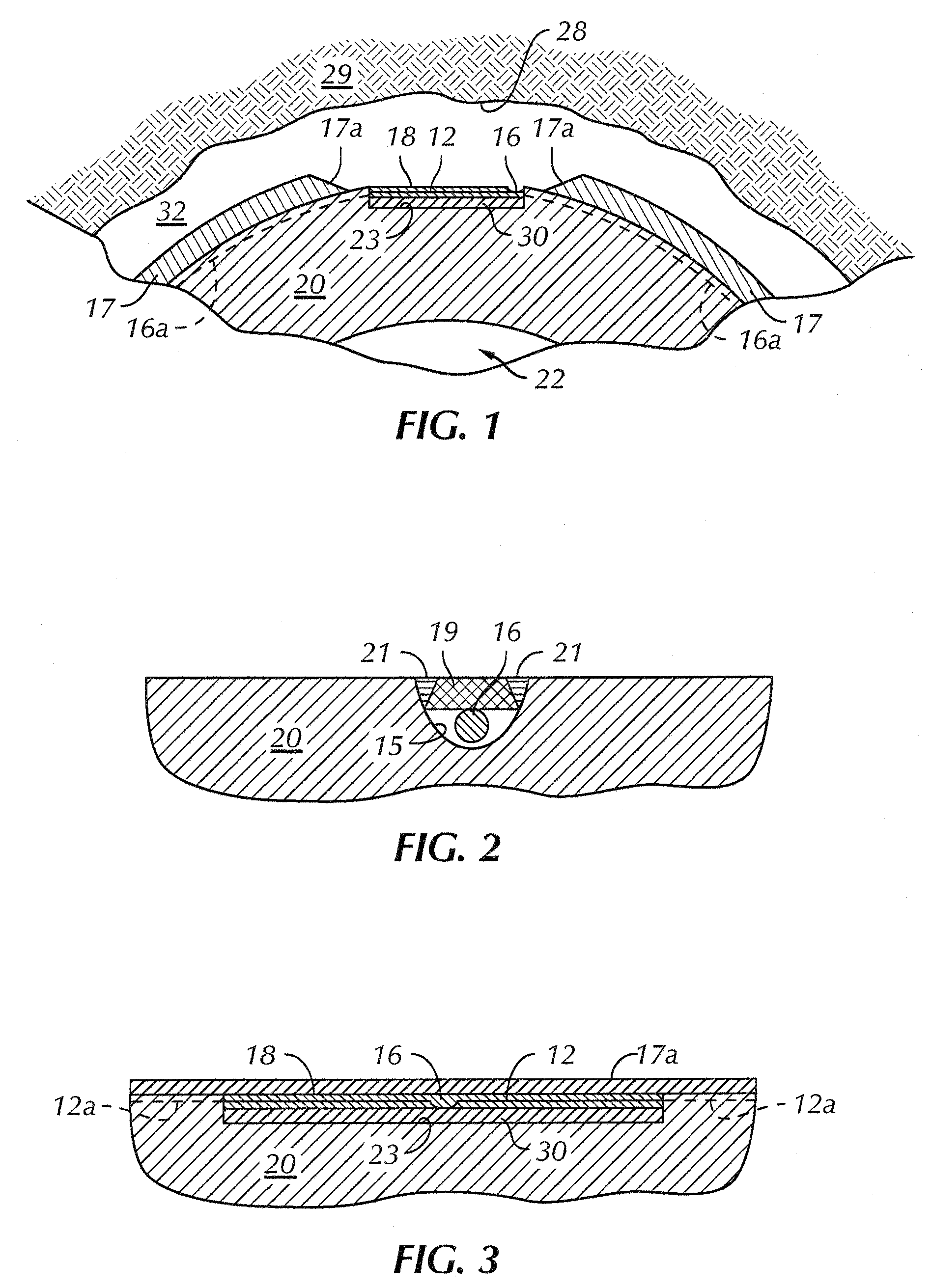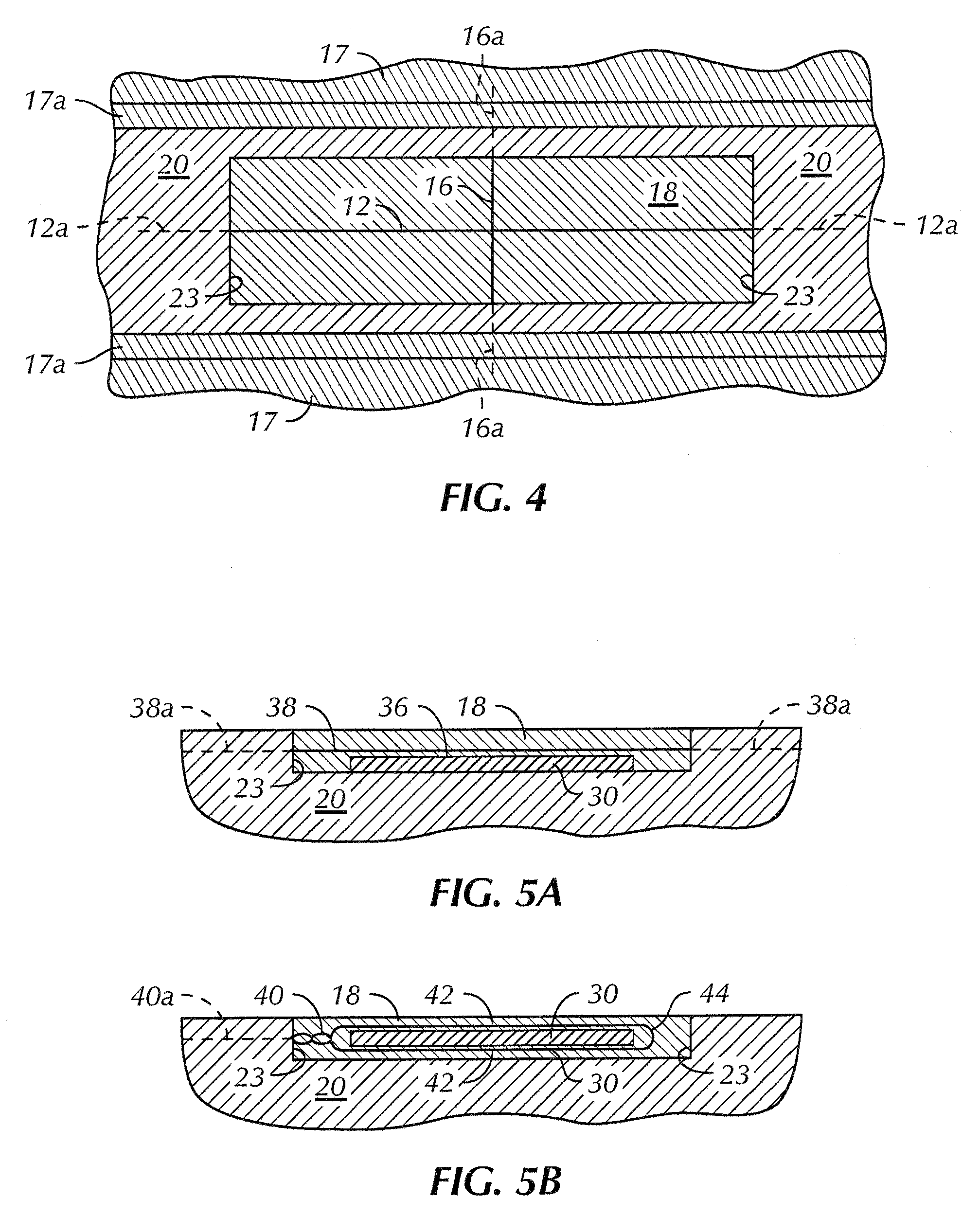Array Antenna for Measurement-While-Drilling
a technology of array antenna and drill collar, which is applied in the direction of protective material radiating elements, instruments, subaqueous/subterranean adaption, etc. it can solve the problems of increasing tool production and maintenance costs, reducing mechanical tool strength, and unable to distinguish resistivity changes in the coils aligned with the tool axis, so as to reduce the strength of the drill collar, reduce the structural integrity, and protect the drill collar from abrasion and other damag
- Summary
- Abstract
- Description
- Claims
- Application Information
AI Technical Summary
Benefits of technology
Problems solved by technology
Method used
Image
Examples
Embodiment Construction
[0050]The present invention is described herein as a MWD or LWD wave propagation resistivity logging system comprising an integrated dipole array antenna. For brevity, both MWD and LWD systems will be referred to as “MWD” systems. The array antenna comprises several array elements that can act alone or in combination to produce a variety of measurement modes. Each array element is a cross-dipole element having cross magnetic dipoles. The dipole antenna components are used as both transmitters and receivers. Subsequent descriptions of antenna operation in a transmission mode apply equally to antenna operation in a reception mode. It will be realized by those familiar with the art that all of the magnetic dipole based antennas discussed in this disclosure can operate in either a transmission mode or a reception mode.
[0051]In a transmission mode, magnetic dipoles are generated by controlling, preferably with a numerically controlled oscillator (NCO) cooperating with a processor, the ph...
PUM
 Login to View More
Login to View More Abstract
Description
Claims
Application Information
 Login to View More
Login to View More - R&D
- Intellectual Property
- Life Sciences
- Materials
- Tech Scout
- Unparalleled Data Quality
- Higher Quality Content
- 60% Fewer Hallucinations
Browse by: Latest US Patents, China's latest patents, Technical Efficacy Thesaurus, Application Domain, Technology Topic, Popular Technical Reports.
© 2025 PatSnap. All rights reserved.Legal|Privacy policy|Modern Slavery Act Transparency Statement|Sitemap|About US| Contact US: help@patsnap.com



